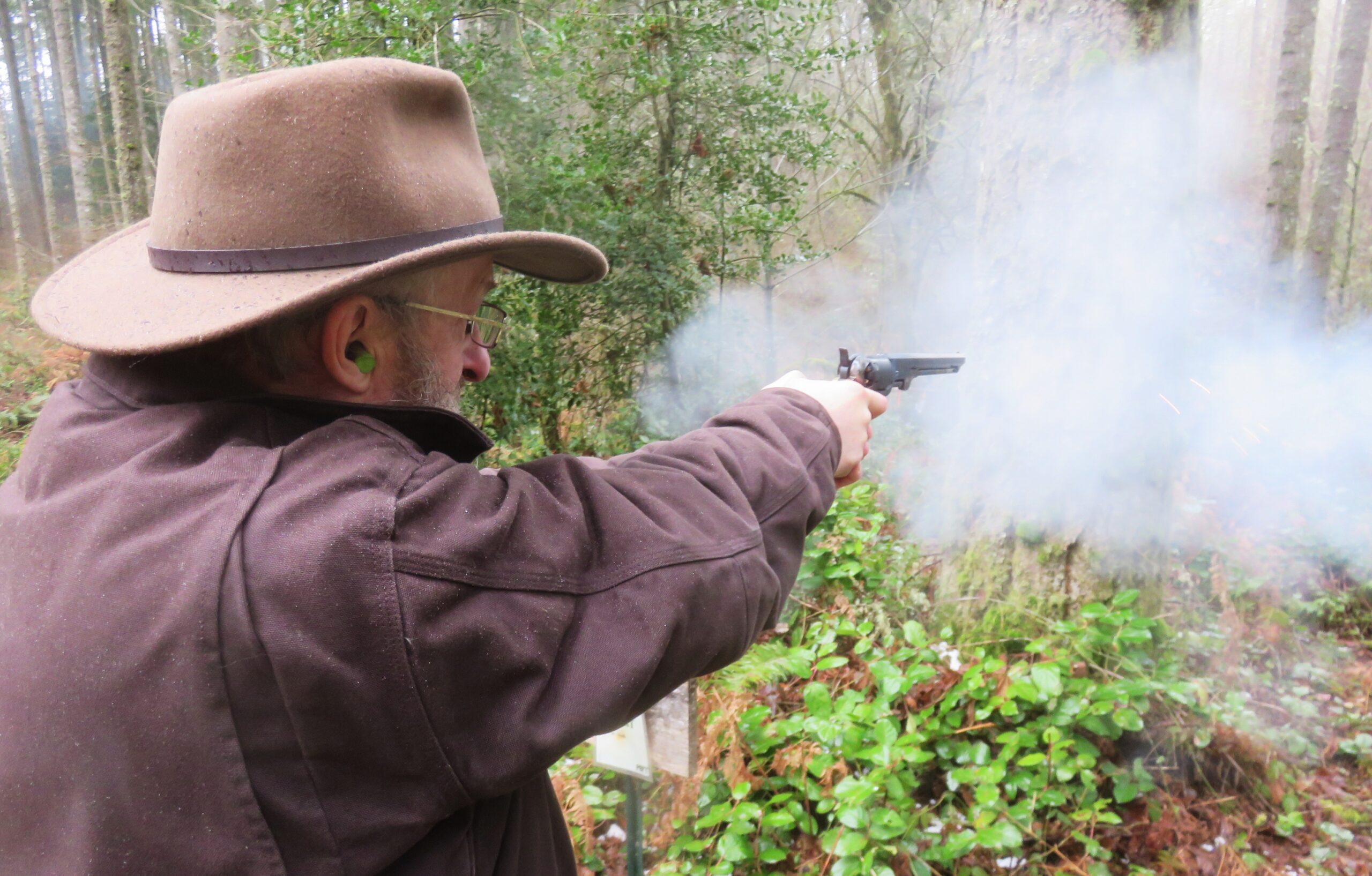
By Mike Nesbitt | Contributing Editor
After doing the shooting with cap & ball six-guns for the “Gunfighter’s Challenge,” our little group is doing a lot more shooting with those percussion “wheel guns.”
It is just too much fun not to… And performance wise, the old cap & ball revolvers leave rather little to be desired. Give that replica Colt or Remington a little experience and it will probably surprise you.
Here’s one example of when a bunch of us were rather surprised. It happened at one of our Old West Centerfire Matches, where we shoot black powder cartridge rifles, such as the Sharps, in friendly competition. Those matches, which require just twenty shots with our rifles, generally get finished in a short enough time that we added an after-match, which was often ten more shots with a black powder cartridge revolver. A new shooter joined our ranks and after the rifle shooting was concluded, we all headed for the pistol range. This new shooter, just joining our group, was Jerry Johnson, and I had seen him shoot before in the silhouette matches. It turned out that he didn’t have a cartridge revolver that he wanted to use in the after-match so he brought his replica of a Colt .36 Navy, with two cylinders loaded and ready, but not capped.
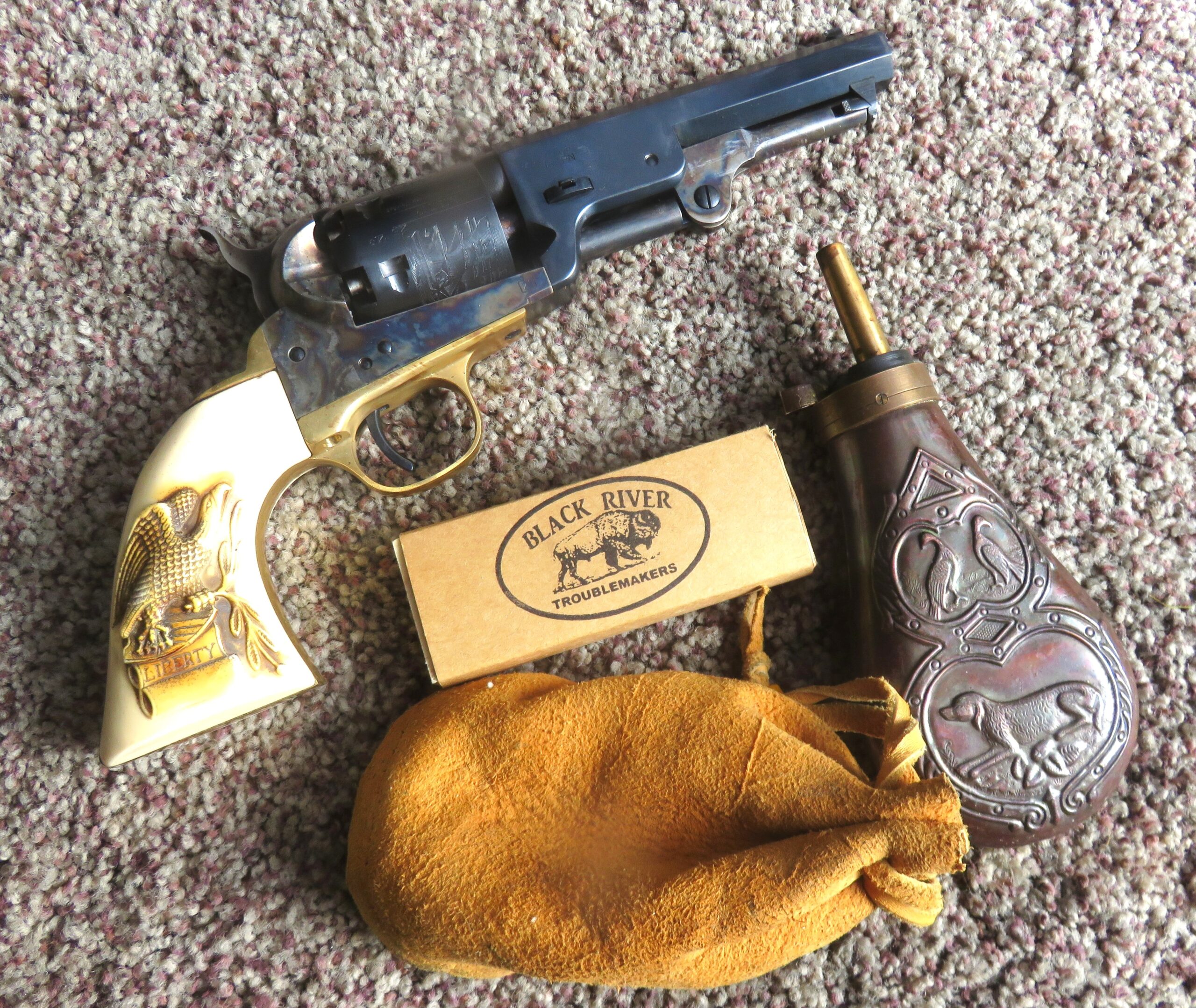
To be brief about it, Jerry used his .36 Navy to “clean our clocks” and take all of the money for that after-match. That did surprise me and all of the other shooters.
Cap & Ball ‘Gunfighter Shoot-Out’ Challenge
Jerry’s performance also invited a number of us to try our percussion six-guns more often and how they’ve let their habit-forming tendencies really grab us. I’ve told you about some of these things, including the short-barreled 1851 Navy that I found and bought which received the new taller front sight. Now I shoot that gun more than my other revolvers and I find it both a real pleasure and quite rewarding. And, I’m not alone.
Most of my comments are being directed to the .36 Navy caliber but at least half of the gunners I shoot with use the .44 caliber cap & ball revolvers. One of them, Mike Moran, uses a .44 caliber version of the Colt 1851-style guns with a brass frame and he loads it with paper cartridges containing 25 grains of black powder under a conical bullet. That combination serves him very well and other users of the .44s enjoy similar performance.
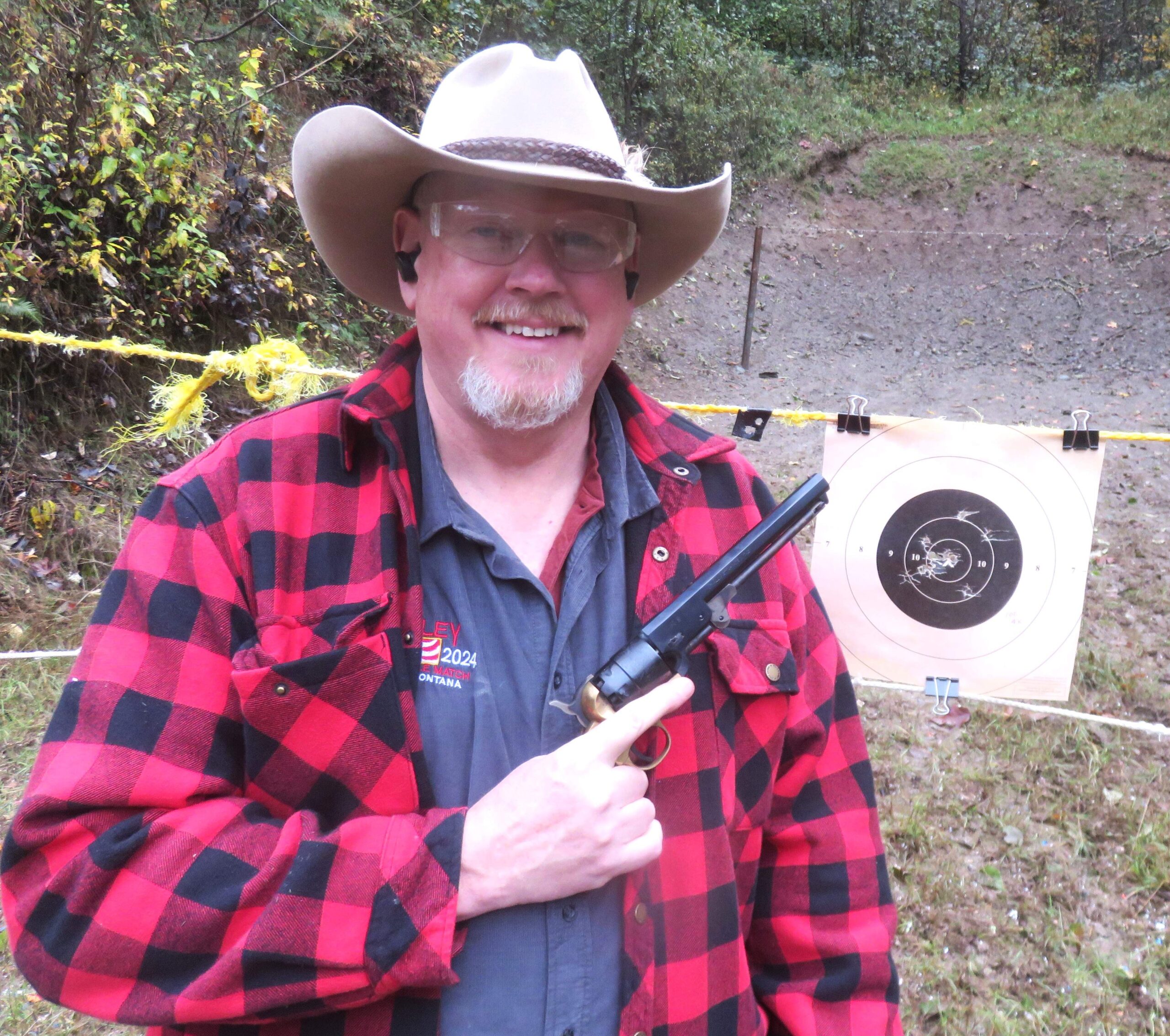
Since several members of our group, shooting at the Capitol City Rifle & Pistol Club near Olympia, Washington, shot in the Gunfighter’s Challenge, we are planning on creating more events where we’ll be shooting our cap & ball six-guns. One of these ideas is to have a match on the trail-walk, shooting at twelve different hanging steel targets, one shot at each, as we go down the trail. And those shots will be taken one-handed. With this new event in mind, it will be shot at a new annual event every December, called the Lever-Gun Trail Camp. Yes, most of the shooting will be done with our lever action rifles, using black powder loads, and the cap & ball trail match will be added for fun. We’ve had a couple of our members buy new replica revolvers just so they won’t be left out.
The twelve-shot match will, of course, require reloading on the trail. Plans for doing that vary among the shooters we should have. Myself, I’m probably just going to load with powder from my flask, round balls from my pouch, cover the balls in the chambers with Vigilante’s grease, cap the nipples, and continue shooting. Others are planning on using “already rolled” paper cartridges while at least two others plan on carrying extra loaded cylinders. We can’t be surprised if one or two shooters decide to walk down the trail with two guns. I haven’t decided to not use paper cartridges, in fact, I’ll most likely have a box holding six of them with me just to be sure all of the bases are covered.
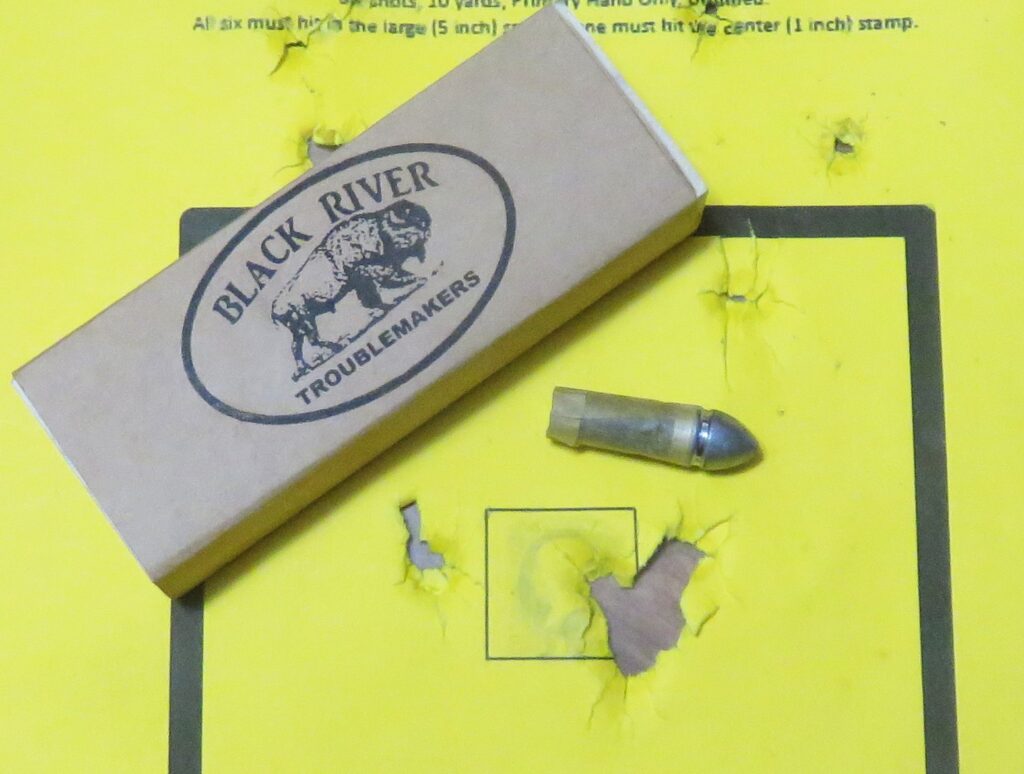
And “cartridge boxes” holding six of the paper cartridges are being made by one of our own club members, Jerry Mayo. These cartridge boxes are wooden with holes drilled for the six cartridges, necessary because the paper cartridges are rather delicate, and that “box” is contained in a cardboard “sleeve” which is decorated with our club’s logo. Such doin’s makes a handy way to carry the prepared cartridges in a coat or vest pocket, well protected.
You might recall seeing the story I did about making paper cartridges for the .36 caliber revolvers about a year and a half ago. That was after I’d gotten the kit for making those paper cartridges from Guns of the West, and I’m still using that kit. That story told you about making and shooting the paper cartridges. There is nothing in that story that I’d want to change now except for one little thing; I said the non-nitrated papers left no ash or particles in the gun’s chambers after being fired. Let me update that now and say there can be some leftovers from the paper cartridges. Let me explain how I found out…
While doing some shooting, I might experience having a cap firing with the drop of the revolver’s hammer but the chamber would not fire. Yes, that sort of thing happens with any percussion firearm but with these revolvers it is a surprise. So, I’d simply put on a new CCI percussion cap and try it again. Almost all of the time, the chamber would fire with the second blast of the cap. One time a chamber took three caps to fire…
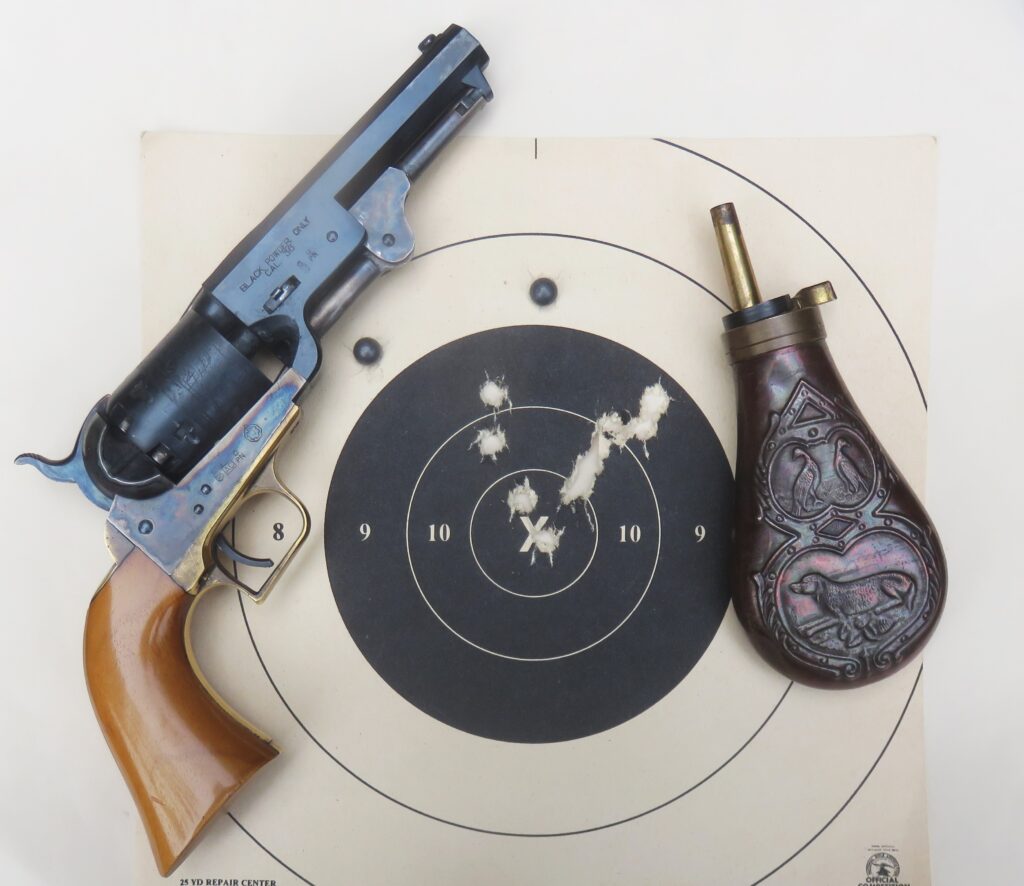
That got me to talking with Mike Holeman, a fellow shooter who was also using paper cartridges in the ivory-gripped .36 which he had just bought. I asked him if he had found any leftovers from the paper in his gun’s chambers. He said, “Oh yes,” and then he proceeded to show me how he found it and extracted some small left-over paper from a shot he had just fired.
The paper left in the chamber was not much. Actually, I don’t think that would hamper the ignition for the next shot. Looking back at the misfires I had, I think a couple of the chambers in my gun were holding leftover paper from more than one shot, enough to keep the flash from the percussion caps from igniting the powder in those chambers.
Should we be concerned about the little bits of paper left in the chambers? Yes, for two reasons; first, none of us wants to be surprised (I’m using “surprised” a lot in this story) by finding a glowing spark on the paper from a previous shot when we begin to load that chamber again. Such a likelihood is very small, but it remains a possibility. One way to check is to blow some breath into the chamber and if any smoke comes out, which could be evidence of something burning, wait before trying that again. The other reason is for reliability for the next shot. One way to help maintain that reliability is in the way we make those paper cartridges.
Too often, when I’m rolling my paper cartridges, I’ll have the rolled cone of paper just a bit too long, and the excess length gets folded over at the closed end of the cone. Then the “end cap” of paper gets glued over that, which seals the small end of the cartridge. That gives the cartridge a double thickness of paper which, I’m guessing, is the part of the cartridge which becomes left in the chamber. Perhaps that “double end” is too heavy to be blown out. For my own shooting and use of paper cartridges, I’m going to be more careful in making the cartridges which, I believe, will make for more reliable shooting.
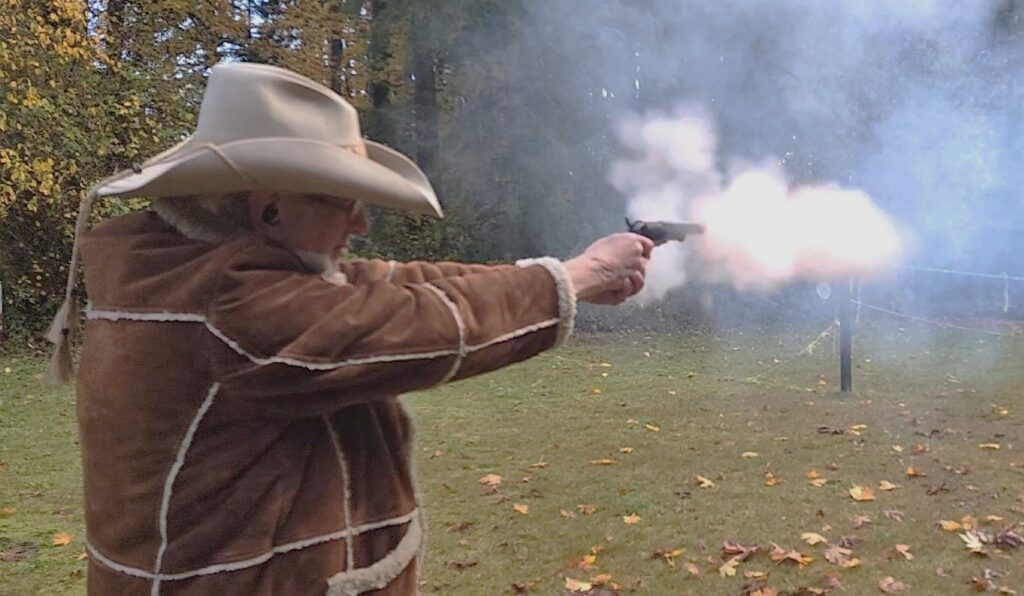
A rather easy way to reduce the leftover paper in the revolver’s chambers from shooting with paper cartridges is to just reduce the amount of paper used to make those cartridges. When I started making paper cartridges with the Guns of the West cartridge-making kit, I was cutting the paper “leaves” into three pieces. Now I cut those leaves into four equal pieces. And I make sure there is no paper folded over the end of the forming cone, which means only one thickness of paper, the “end cap,” is between the percussion cap and the powder charge. Cartridges made with the least amount of paper are working very well.
Of course, another way to highly reduce the leftover paper problem and to increase reliability is to nitrate the cartridge paper. That’s what they did in the old days. Buffalo Arms Company sells prepared paper cartridges with nitrated paper for .36 and .44 caliber revolvers. I’ve shot some of those in the .36 caliber guns and they perform very well. “BACO” also sells sheets of nitrate paper for making those cartridges. For more information look on their website at buffaloarms.com.
And the leftover papers in the revolvers’ chambers are certainly not enough to stop anyone from using those paper cartridges. It is just a small fact about shooting those paper cartridges, something that must be considered both while doing the shooting and when cleaning the guns after shooting. I’ll keep on doing some of my shooting with the paper cartridges.
Included in the shooting we’ve done lately is to give greater attention to one-handed shooting. That’s an area where practice really pays off. Recently I shot what might be called two groups on one target, which included six shots fired one-handed followed by six more shots, fired with a two-hand hold. The six shots fired one-handed printed the highest and when Jerry Johnson saw that, he recommended that I simply grip the gun with a tighter hold.
The .36 Navy has a rather light recoil, but it does have some recoil. If the “Peacemaker” style grip rotated in your hand when the gun fired, as recoil will try to do, it can make the bullets hit higher on the target. I’ll give holding the gun tighter a good try.
On that same target, six more shots were fired with a two-hand hold and those all printed closer to center, with at least three of those shots punching good Xs.
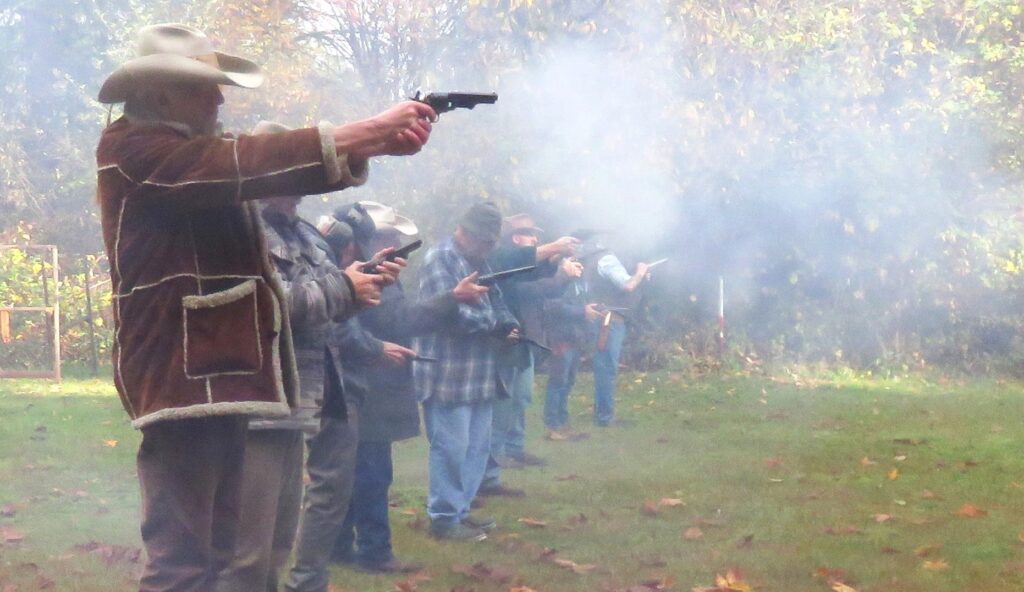
But there is a little more to say about that target; the first six shots were fired with 126-grain conical bullets, with 17 grains of GOEX 3Fg powder, while the second batch of six shots were all fired while shooting 80-grain round balls, over 20 grains of powder, in the .36 Navy. Yes, the 126-grain bullets did have a greater recoil which might also be a factor or cause for their hitting higher on the target. With those factors adding to the differences, the two groups are certainly over-lapping and I consider the shooting to be very good.
As you can see, the adventures we’re enjoying with the cap & ball revolvers are really just beginning; we’ll have more shooting and new events where our skills and those replica six-guns will thoroughly be tested. We’re not doing anything new because this type of shooting, with these types of revolvers, was all done over 150 years ago. But it is new to us and therefore we’re doing new and interesting things. It’s that “new” part which keeps such black powder shooting explorations interesting and keeps it a true adventure.


